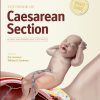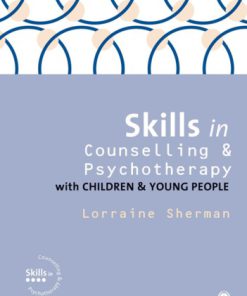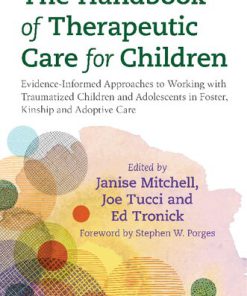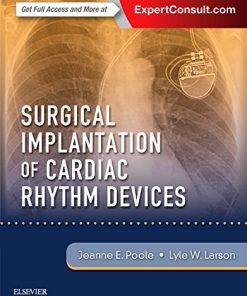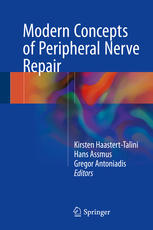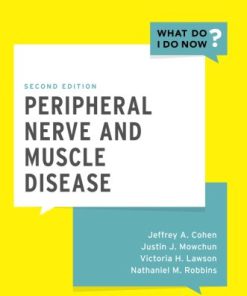Cochlear Implantation in Children with Inner Ear Malformation and Cochlear Nerve Deficiency 1st Edition by Kimitaka Kaga 9811014000 9789811014000
$50.00 Original price was: $50.00.$25.00Current price is: $25.00.
Cochlear Implantation in Children with Inner Ear Malformation and Cochlear Nerve Deficiency 1st Edition by Kimitaka Kaga – Ebook PDF Instant Download/DeliveryISBN: 9811014000 9789811014000
Full download Cochlear Implantation in Children with Inner Ear Malformation and Cochlear Nerve Deficiency 1st Edition after payment.
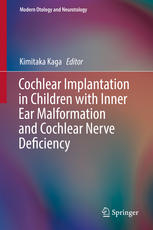
Product details:
ISBN-10 : 9811014000
ISBN-13 : 9789811014000
Author: Kimitaka Kaga
The purpose of this book is to contribute to basic and clinical medical research on cochlear implants for inner ear malformation and cochlear nerve deficiency. Cochlear implantation for children is performed worldwide, and the outcomes concerning speech and hearing acquisition are epoch-making. However, there are some difficulties associated with applying this operative treatment to patients who have complicated inner ear malformations or cochlear nerve deficiencies that have slowed the development of their speech, hearing, and/or sense of balance. The first part of the book outlines the fundamental aspects of inner ear maldevelopment to facilitate readers’ understanding of cochlear implantation from the point of view of embryology, morphology, and genetics. In turn, the second part describes current clinical cases and presents successful clinical reports. The book offers a primary resource for otolaryngologists, neurologists, and pediatricians with an interest in this field.
Cochlear Implantation in Children with Inner Ear Malformation and Cochlear Nerve Deficiency 1st Table of contents:
Chapter 1: Overview
1.1 Inner Ear Malformation
1.1.1 The Eighteenth Century: “Dissection of the Temporal Bone by Mondini (Figs. 1.1 and 1.2)
1.1.2 The Nineteenth Century: “Temporal Bone Histology”
1.1.3 The Twentieth Century: “X-ray and CT of Temporal Bone”
1.1.4 The Twenty-First Century: “High-Resolution CT and MRI of the Temporal Bone”
1.2 Cochlear Nerve Deficiency (CND)
References
Chapter 2: Embryology of Inner Ear and Its Malformation
2.1 Anatomical Development of the Cochlea and Auditory System
2.1.1 Development of the Cochlea and Myelination of the Auditory System
2.1.2 Inner Ear Malformation and Arrest of Development of the Inner Ear
2.1.3 Development of the Central Auditory Pathway
2.1.4 As Developmental Arrest of the Inner Ear, Common Cavity, and Cochlear Nerve Deficiency May
2.1.5 Conduction Speed of Nerve Impulse Before and After Myelination
References
Chapter 3: Embryology of Cochlear Nerve and Its Deficiency
3.1 Introduction
3.2 Embryology
3.2.1 First Trimester
3.2.2 Second Trimester
3.2.3 Third Trimester
3.2.4 Summary
3.3 Cochlear Nerve Deficiency
3.4 Conclusion
References
Chapter 4: Morphology, Development, and Neurotrophic Regulation of Cochlear Afferent Innervation
4.1 Introduction
4.2 Morphology of SGNs and Their Neural Connection
4.3 Development of SGNs
4.3.1 Neurogenesis
4.3.2 Cell Death in SGNs
4.3.3 Postnatal Rearrangement of Cochlear Afferent Innervation
4.4 Neurotrophic Factors and SGNs
4.4.1 Expression of Neurotrophins and Their Receptors in the Cochlea
4.4.2 Neurotrophic Support for SGN Survival in Embryonic Development
4.4.3 Other Neurotrophic Factors Involved in the Development of Cochlear Innervation
4.4.4 Neurotrophic Factors Promote Survival and Neuritogenesis of SGNs In Vitro
4.4.5 Damage of the Organ of Corti and Secondary Degeneration of SGNs
4.4.6 Therapeutic Potential of Neurotrophic Factors in Cochlear Implant Therapy
References
Chapter 5: Genetics of Inner Ear Malformation and Cochlear Nerve Deficiency
5.1 Introduction
5.2 Nonsyndromic Hearing Loss
5.2.1 DFNB4/Pendred Syndrome
5.2.2 DFN3
5.3 Syndromic Hearing Loss
5.3.1 Waardenburg Syndrome
5.3.2 BOR Syndrome
5.3.3 CHARGE Syndrome
5.3.4 Okihiro Syndrome
5.3.5 Distal Renal Tubular Acidosis (DRTA)
5.4 Chromosomal Disorders Associated with Hearing Loss
5.4.1 Trisomy 21 (Down Syndrome)
5.4.2 Trisomy 18 (Edwards Syndrome)
5.4.3 Trisomy 13 (Patau Syndrome)
5.4.4 22q11.2 Deletion Syndrome (DiGeorge Syndrome)
5.5 Perspective
References
Chapter 6: Classification of Inner Ear Malformations
6.1 Introduction
6.1.1 Complete Labyrinthine Aplasia (CLA, Michel Deformity)
6.1.1.1 Definition and Radiology
6.1.1.2 Audiological Findings
6.1.1.3 Management
6.1.2 Rudimentary Otocyst
6.1.2.1 Definition and Radiology
6.1.2.2 Management
6.1.3 Cochlear Aplasia
6.1.3.1 Definition and Radiology
6.1.3.2 Audiological Findings
6.1.3.3 Management
6.1.4 Common Cavity
6.1.4.1 Definition and Radiology
6.1.4.2 Audiological Findings
6.1.4.3 Management
6.1.5 Hypoplasia and Incomplete Partitions
6.1.5.1 Incomplete Partition of the Cochlea: Definition and Radiology
6.1.5.2 Types of Incomplete Partition Groups
Incomplete Partition Type I (IP-I)
Audiological Findings
Incomplete Partition Type II (IP-II)
Audiological Findings
Management
Incomplete Partition Type III (IP-III)
Radiology
Audiological Findings
Management
6.1.6 Hypoplasia and Incomplete Partitions
6.1.6.1 Cochlear Hypoplasia: Radiology and Definition
6.1.6.2 Types of Cochlear Hypoplasia
Type I (Bud-Like Cochlea)
Type II (Cystic Hypoplastic Cochlea)
Type III (Cochlea with Less Than Two Turns)
Type IV (Cochlea with Hypoplastic Middle and Apical Turns)
Management
6.1.7 Large Vestibular Aqueduct (LVA)
6.1.8 Cochlear Aperture Abnormalities
6.1.8.1 Definition and Radiology
6.1.8.2 Audiological Findings
6.1.8.3 Management
6.2 Cochlear Nerve Abnormalities
6.2.1 Normal Cochlear Nerve (CN)
6.2.2 Hypoplastic CN
6.2.3 Absent CN
6.2.4 Normal CVN
6.2.5 Hypoplastic CVN
6.2.6 Absent CVN
References
Chapter 7: Outcome of Cochlear Implantation in Children with Cochlear Nerve Deficiency and/or Inn
7.1 Introduction
7.2 Cochlear Implantation in Children with CND
7.2.1 Introduction to CND
7.2.2 Diagnosis of CND
7.2.3 Outcome of CI in Children with CND
7.3 Cochlear Implantation in Children with IEMs
7.3.1 Introduction to IEMs
7.3.2 Diagnosis and Classification of IEMs
7.3.3 Outcome of CI in Children with IEMs
7.4 Conclusion
References
Chapter 8: EABR of Inner Ear Malformation and Cochlear Nerve Deficiency After Cochlear Implantatio
8.1 Introduction
8.2 Measurement and Reading of EABR
8.2.1 Measurement of Intracochlear EABR
8.2.2 EABR Waves of Patients Without Inner Ear Malformation
8.2.2.1 Case No. 1
8.2.2.2 Comment
8.3 EABR Waves of Patients with Modiolus Present Type of Inner Ear Malformation
8.3.1 Modiolus Present and Cochlear Nerve Present Type
8.3.1.1 Case No. 2
8.3.1.2 Comment
8.3.2 Modiolus Present and Cochlear Nerve Deficiency Type
8.3.2.1 Case No. 3
8.3.2.2 Comment
8.4 EABR Waves of Patients with Modiolus Absent Type of Inner Ear Malformation
8.4.1 Modiolus Absent and Vestibulocochlear Nerve Present Type
8.4.1.1 Case No. 4
8.4.1.2 Comment
8.4.2 Modiolus Absent and Vestibulocochlear Nerve Deficiency
8.4.2.1 Case No. 5
8.4.2.2 Comment
8.5 Vestibular Simulated EABR
8.5.1 Case No. 6
8.5.2 Comment
8.6 Our Series of Cochlear Nerve Deficiency
References
Chapter 9: Vestibular Neuropathy
9.1 Introduction
9.2 Auditory Neuropathy with Vestibular Involvement
9.3 Vestibular Involvement in Other Neuropathic Diseases
9.3.1 Charcot-Marie-Tooth (CMT) Disease
9.3.2 Dominant Optic Atrophy (DOA)
9.3.3 Guillain-Barre Syndrome (GBS)
9.3.4 Chronic Inflammatory Demyelination Neuropathy (CIDP)
9.3.5 Sarcoidosis
9.3.6 Friedreich’s Ataxia (FRDA)
9.3.7 Mitochondrial Encephalomyopathy
9.3.8 Wernicke’s Encephalopathy
9.3.9 Diabetes Mellitus (DM)
9.4 Idiopathic Bilateral Vestibulopathy (IBV)
9.5 Summary
References
Chapter 10: Vestibular Development of Children with Inner Ear Malformation and Cochlear Nerve Def
10.1 Introduction
10.2 Material and Methods
10.2.1 Patients
10.2.2 Motor Development
10.2.3 Damped-Rotational Chair Test
10.3 Result
10.3.1 Inner Ear Malformation
10.3.2 Cochlear Nerve Deficiency
10.4 Discussion
References
Chapter 11: Vestibular-Evoked Myogenic Potential After Cochlear Implantion
11.1 VEMPs of Normal Child Development
11.2 VEMPs in Infants with Congenital Profound Hearing Loss
11.3 VEMPs in Children with No Inner Ear Malformation After Cochlear Implantation
11.4 VEMPs in Children with Inner Ear Malformation After Cochlear Implantation
References
Chapter 12: Speech and Hearing after Cochlear Implantation in Children with Inner Ear Malformatio
12.1 Introduction
12.2 Speech Perception in CC, IP-I, and IP-II
12.2.1 Introduction
12.2.2 Speech Perception Test Results
12.2.2.1 CI-Aided Thresholds
12.2.2.2 Monosyllable Perception Scores
12.2.2.3 Word Perception Scores
12.2.2.4 CAP Score and SIR Scale
12.2.3 Mapping Characteristics in Children with an Inner Ear Anomaly
12.2.3.1 Number of Usable Electrodes
12.2.3.2 The Amount of Charge Used in Electrodes
12.2.3.3 Modification of Routine Mapping Procedures
12.3 Discussion on Speech Perception and Map Parameters
12.4 Distribution of Auditory Neurons in Common Cavity Anomaly
12.4.1 Introduction
12.4.2 CI-Mediated EABR Findings in CC Patients
12.4.3 Discussion on CI-Mediated EABR in Common Cavity Anomaly
12.5 Cochlear Nerve Deficiency
12.5.1 Introduction
12.5.2 Patients, Methods, and Results
12.5.3 Discussion on CI in Cochlear Nerve Deficiency
People also search for Cochlear Implantation in Children with Inner Ear Malformation and Cochlear Nerve Deficiency 1st:
cochlear implant in child
cochlear implant in toddlers
cochlear implant in infants
cochlear implants in children ethics and choices
cochlear implant on a child
Tags: Cochlear, Implantation, Children, Malformation, Nerve Deficiency, Kimitaka Kaga
You may also like…
Psychology - Psychotherapy
Psychology - Psychotherapy
Politics & Philosophy - Anthropology
Education Studies & Teaching - School Education & Teaching


